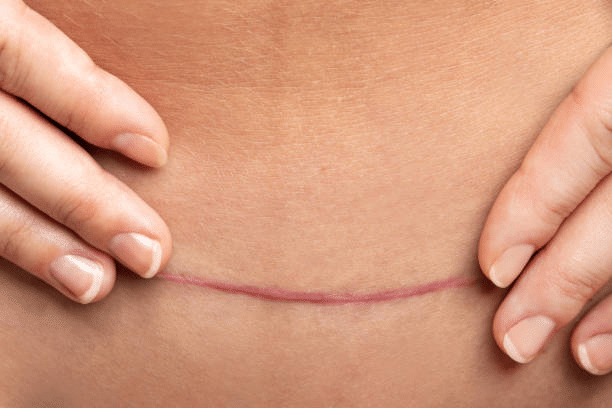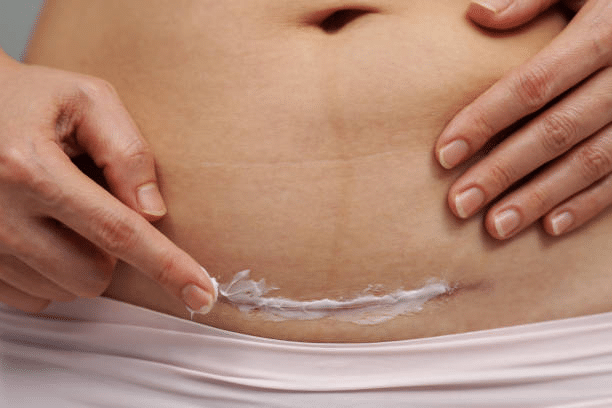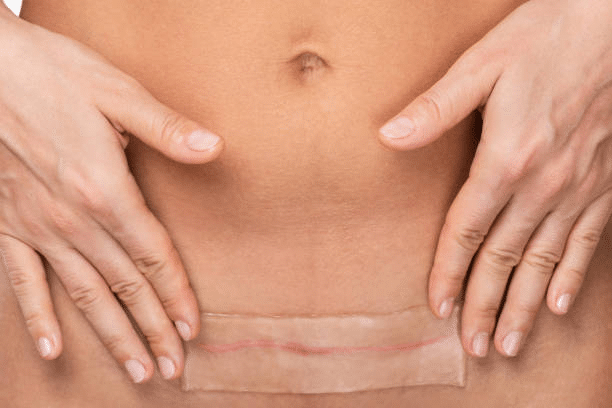A tummy tuck is a transformative procedure that helps many people achieve a flatter, firmer abdomen after pregnancy or weight loss. But as the swelling fades and the results begin to show, one question becomes common — what does the tummy tuck scar look like after six months?
By this time, the healing process has come a long way, but the scar is still evolving. Understanding what’s normal, what’s not, and how to care for it can make a big difference in your final result.
As an experienced plastic surgeon in Hyderabad, Dr. Harikiran Chekuri has guided thousands of patients through every stage of recovery — from surgery to scar management. At Redefine Hair Transplant & Plastic Surgery Center, he offers both reconstructive and cosmetic treatments, including tummy tuck surgery and advanced hair transplant in Hyderabad. His approach combines precision, patient education, and modern scar-minimizing techniques to help people feel confident about their transformation.
What to Expect Six Months After Tummy Tuck

At this stage:
● The incision line is closed and healed but may still look pink, slightly raised, or firm.
● Numbness or tightness around the lower abdomen may persist as nerve endings recover.
● The scar’s color begins to fade gradually from red to light pink or beige.
● The surrounding skin continues to soften, giving a more natural look to your abdomen.
Dr. Harikiran Chekuri explains that six months after a tummy tuck, the scar is in its remodeling phase. With the right care and patience, the mark continues to improve over the next several months — often becoming much less noticeable by the end of a year.
What Should a Tummy Tuck Scar Look Like After 6 Months?
A healthy tummy tuck scar after 6 months usually appears:
● Flat or slightly raised
● Light pink, brown, or pale in color
● Positioned low on the abdomen, often hidden under clothing
● Smooth to touch, without lumps or crusting
It’s also normal for the scar to feel a little firm or tight.
Over time, it softens as collagen fibers reorganize beneath the skin.
However, if your scar is dark, thick, itchy, or looks uneven, don’t worry — this doesn’t always mean something is wrong.
What Affects How Your Scar Heals?

Your body, lifestyle, and surgical factors all influence how your tummy tuck scar looks after 6 months.
Key elements include:
● Surgical precision: A well-planned incision and meticulous closure play the biggest role. That’s why experience matters — surgeons like Dr. Harikiran Chekuri ensure the incision line sits naturally and heals evenly.
● Skin type: People with darker skin tones may develop more visible pigmentation, while lighter skin often fades faster.
● Genetics: Some individuals are predisposed to thicker or raised scars.
● Post-surgery care: Proper wound care, gentle massage, and using prescribed scar products can dramatically affect healing.
● Lifestyle factors: Smoking, dehydration, and poor diet can slow recovery and impact collagen production.
● Sun exposure: Fresh scars are sensitive — UV rays can darken them, making them more visible.
How to Minimize a Tummy Tuck Scar After 6 Months

Try these effective steps to help your scar fade further:
1. Scar massage: Once approved by your surgeon, gentle massage can help break down stiff tissue and increase circulation.
2. Silicone gel or sheets: These are proven to flatten and lighten scars over time. Use them consistently for several weeks.
3. Hydration and nutrition: Keep your skin moisturized and eat foods rich in vitamin C, zinc, and protein — all crucial for collagen repair.
4. Sun protection: Always use sunscreen or cover your abdomen when outdoors. Sun exposure can cause permanent pigmentation.
5. Avoid tension on the scar: Rapid weight gain or intense abdominal workouts can stretch the healing tissue.
6. Advanced treatments: If your scar remains raised or uneven, consult your surgeon about options like laser therapy, microneedling, or steroid injections.
Dr. Harikiran Chekuri suggests being patient — most scars continue to refine in appearance for up to 18 months. With consistent care, you’ll likely see significant improvement.
When Should You See a Surgeon
Watch out for:
● Persistent redness, swelling, or pain
● A thick, raised, or widening scar
● Signs of infection like fluid discharge or warmth
● Hard lumps or uneven texture under the skin
● Unusual darkening or pigmentation
If any of these signs appear, visit your tummy tuck surgeon for evaluation. Early evaluation helps prevent long-term scarring and ensures proper management.
Final Thoughts
Dr. Harikiran Chekuri emphasizes that recovery doesn’t end when the incision heals. Staying consistent with scar care, maintaining healthy habits, and keeping regular follow-ups can help you achieve a natural, lasting result that enhances both comfort and confidence.
Frequently Asked Questions
1. Is it normal for my tummy tuck scar to still be visible after six months?
2. Can I do anything to speed up scar fading?
Regular use of silicone products, gentle massage, good hydration, and sun protection all help scars mature better.
3. What if my scar is darker than expected?
Some pigmentation is normal. Avoid sun exposure and consult your surgeon about topical brightening or laser options.
4. Can a tummy tuck scar become invisible?
Not completely — but with time and proper care, it can fade into a fine, light line that’s easy to conceal.


